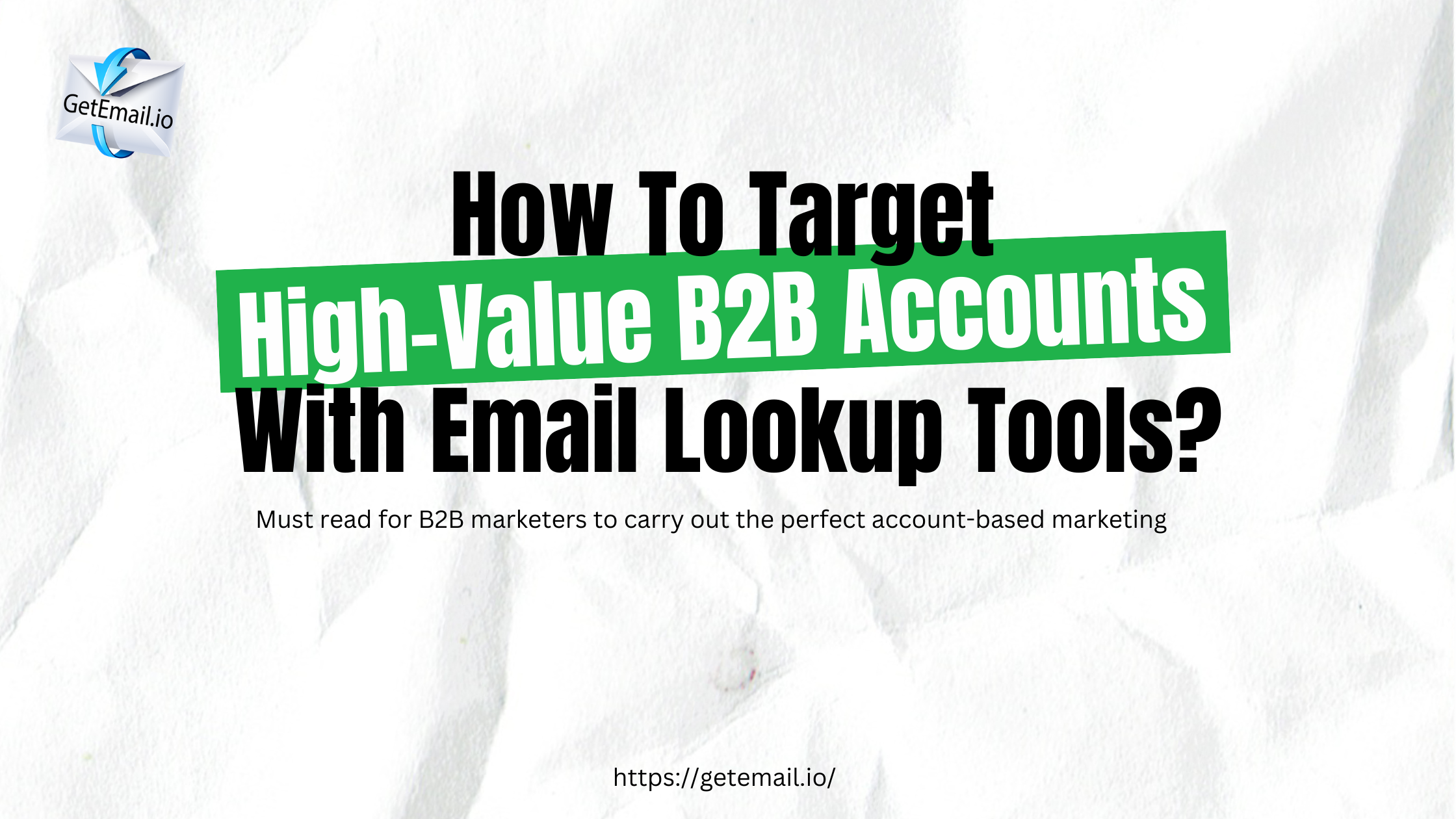
In B2B marketing, reaching high value-accounts isn’t about trying to contact as many people as possible.
Instead, it’s about finding the specific individuals who can truly influence decisions in the company, you know-the decision-makers, and crafting messages that feel relevant to them.
Email look up tools like GetEmail.io can help marketers do this by allowing them to identify and directly reach those key decision-makers and influencers, rather than sending out impersonal, broad emails that often get ignored.
When used strategically, these tools let marketers go beyond “cold” outreach, making connections that feel personal and intentional.
This way, each message can be tailored to match the recipient’s role and needs, helping to build interest and trust right from the start.
The goal isn’t just to get a response but to create a meaningful relationship with the people who actually impact purchasing decisions.
In this blog, we’ll explore how to use email lookup tools such as GetEmail.io to build connections that lead to lasting, valuable partnership with high-value accounts.
Reach the Real Decision-makers Network, Not Just Executives
When targeting high-value accounts, it’s common to focus on top executives like CEOs or VPs.
But in reality, the decision-making process in these companies often involves a broader network of people who influence the final choice.
This network includes project managers, team leads, and technical experts who may not have executive titles but play a key role in deciding which solutions the company adopts. These are the “influencers behind the scenes.”
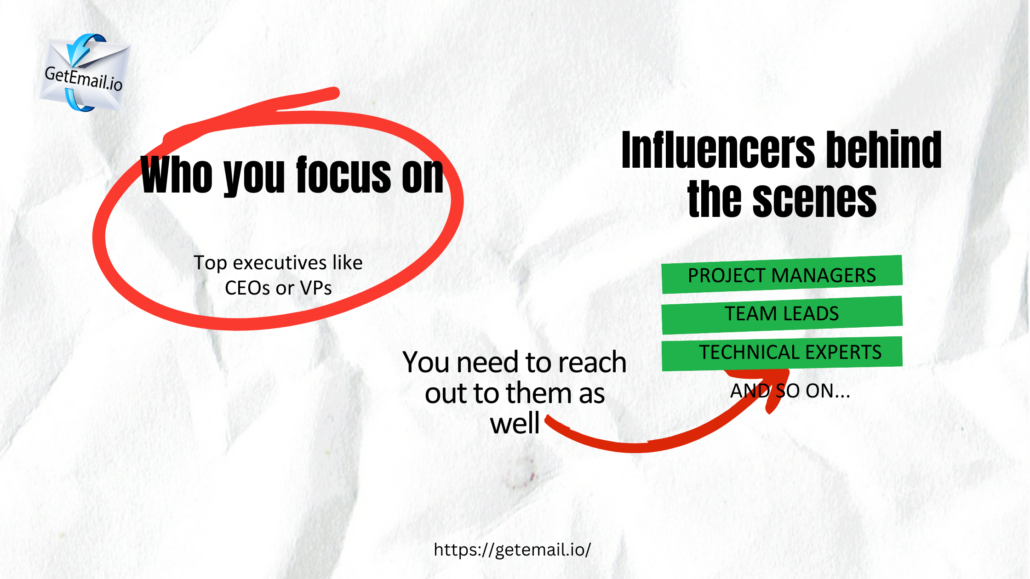
Using B2B email tools, you can identify and connect with these influential contacts, not just the top executives. For instance, GetEmail.io makes the B2B lead generation hassle-free.
With such an AI based tools it’s easy to find the emails of project leads, department managers, or other strategic voices who directly contribute to the buying decision.
Building relationships with these people means you have allies who can advocate for your solution when the decision reaches higher levels.
For example, a project manager who sees the value of your product can bring it up in team discussions and push for it internally.
This approach is effective because B2B buying is rarely a solo decision. Many departments and roles contribute to the final choice.
By engaging a range of contacts early on, you build trust within the company, making it more likely that executives will view your solution as credible and well-supported.
In short, reaching the full decision network strengthens your chances of winning high-value accounts.
Micro-Segment Accounts to Address Specific Needs - The Perfect Sales Targeting approach
Every high-value account is unique, with its own specific goals and challenges.
Some companies might be focused on rapid growth, while others are more concerned with cutting costs or staying ahead with innovation.
Because of this, a one-size-fits-all message won’t resonate. Instead, it’s important to segment or group your target accounts based on their main priorities and tailor your outreach to fit those specific needs.
For instance, start by grouping accounts based on their strategic goals—whether it’s growth, innovation, or cost-effectiveness. If a company is growth-focused, highlight how your solution can scale with them and support that growth.
On the other hand, if you’re reaching out to a company that prioritizes technology, emphasize the advanced features and innovation your product brings.
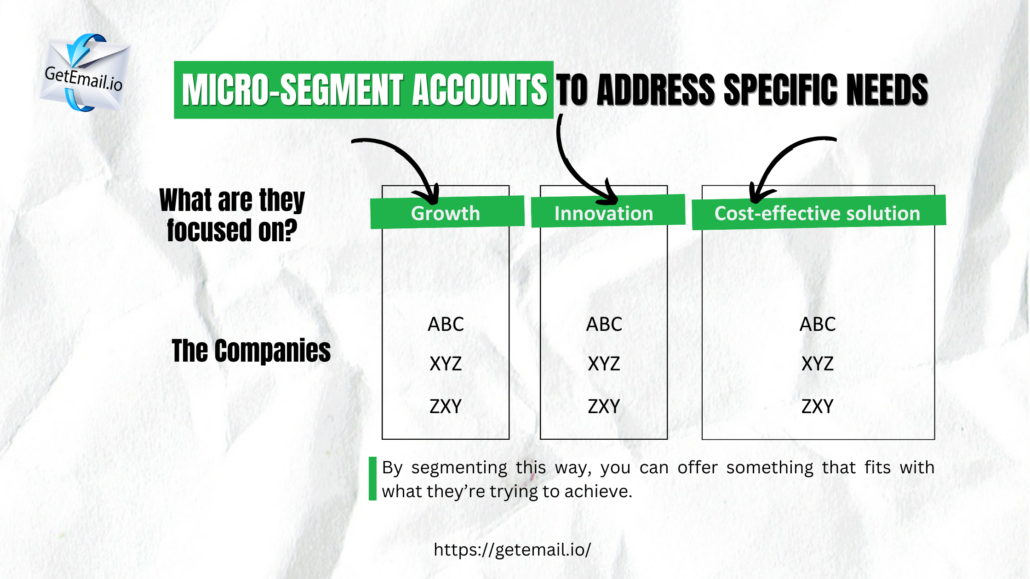
This approach of sales targeting works well because high-value accounts are looking for partners who understand their vision.
Tailoring your messages to align with their unique objectives shows that you’re not just offering a generic solution; you’re offering something that fits with what they’re trying to achieve.
In this way, each message feels more relevant, helping you build stronger, more meaningful connections.
Time Your Outreach to Align with Business Changes
Timing plays a huge role in B2B outreach success.
When you reach out to a high-value account at a moment of change—like during a merger, a new leadership hire, or an expansion—you increase the relevance of your message.
This is because organizations often reconsider their strategies and explore new solutions during transitions.
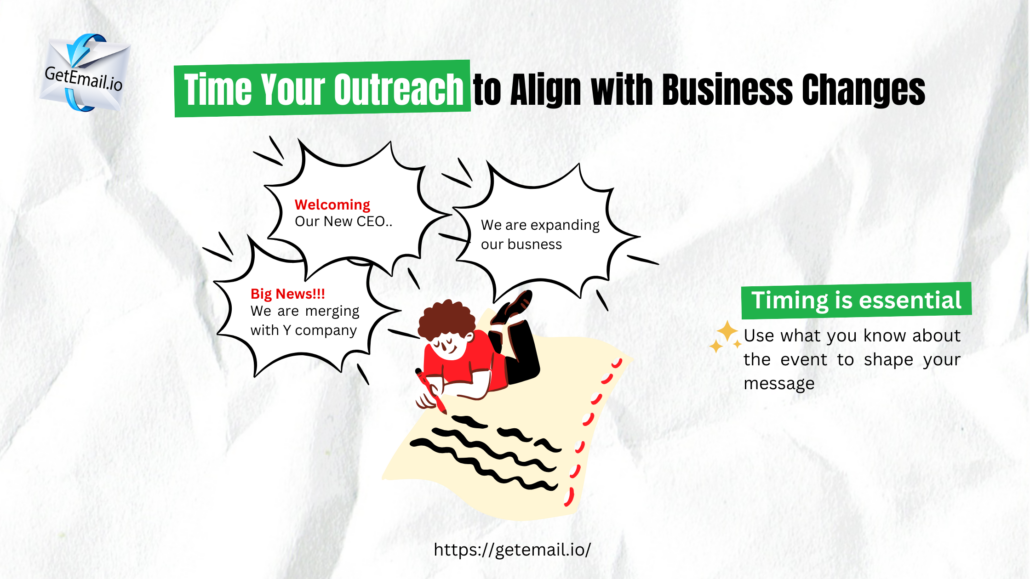
By timing your outreach to align with these shifts, you position yourself as a responsive, timely partner.
Monitor for Trigger Events
These “trigger events” signal a period of change and potential need. Keeping an eye on news related to your target accounts (like announcements of mergers, leadership changes, or big industry shifts) helps you spot these moments.
For example, a merger might mean the company needs solutions to integrate new systems, or a leadership change might indicate a new direction or priorities.
Frame Your Message with Context
Use what you know about the event to shape your message. For example, if a company just expanded, it’s likely focusing on scalability and integration.
In this case, you might frame your product as a scalable solution that can support their growth smoothly and efficiently. This way, your outreach feels tailored and addresses their specific, timely needs.
And when it comes to finding the email address, you have GetEmail.io! Just draft the appropriate message that aligns with the recent event of their organisation and hit send. You are all done!
Why does this work?
Timing is essential because it makes your message feel highly relevant and specific to their current situation.
Prospects are more likely to pay attention to solutions that speak directly to challenges they’re facing now, making your outreach more impactful and likely to resonate.
Build Familiarity Before Reaching Out
Let’s face it—cold emails can be easy to ignore.
When you’re reaching out to someone for the first time, they’re more likely to respond if they already recognize your name.
Warming up your contacts beforehand creates that familiarity and makes your outreach feel less like a random sales pitch and more like a natural connection.
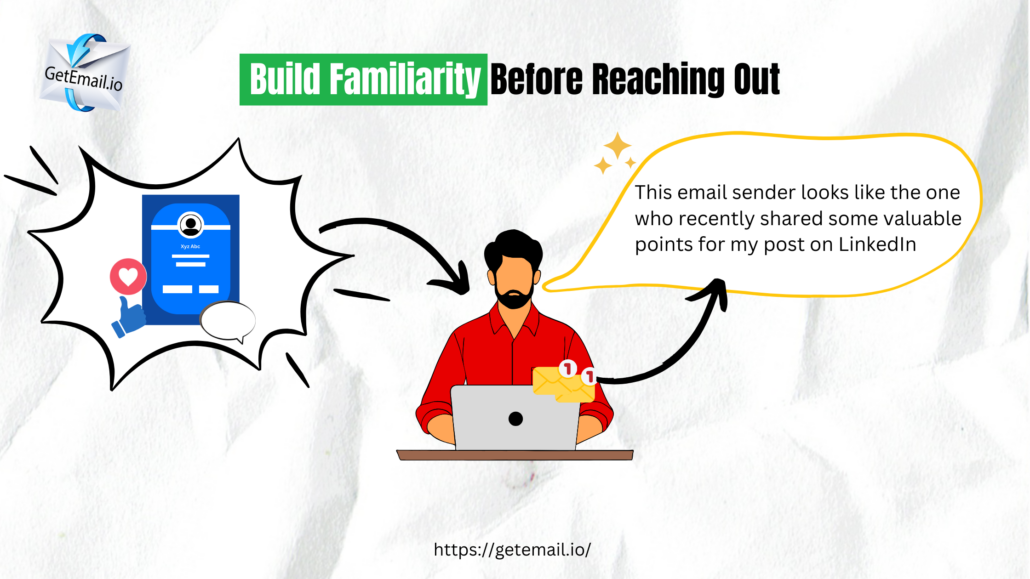
Start by Engaging on Social Media
One of the easiest ways to get on someone’s radar is through social media. Connect with your target contacts on LinkedIn and start engaging with their posts.
You don’t need to go overboard—a like here, a thoughtful comment there.
That’s totally enough!
These small interactions make your name familiar, so when your email eventually lands in their inbox, they already know who you are.
Share Useful Content
Another way to build familiarity is by sharing content that actually matters to them.
Think of industry insights, reports, or case studies that speak to their specific interests or challenges.
With B2B email tools like GetEmail.io, you can identify the professional email addresses of the right people for this content.
Refer to image below – it shows how efficiently you can locate the email addresses of people associated with any company using our popup extension.
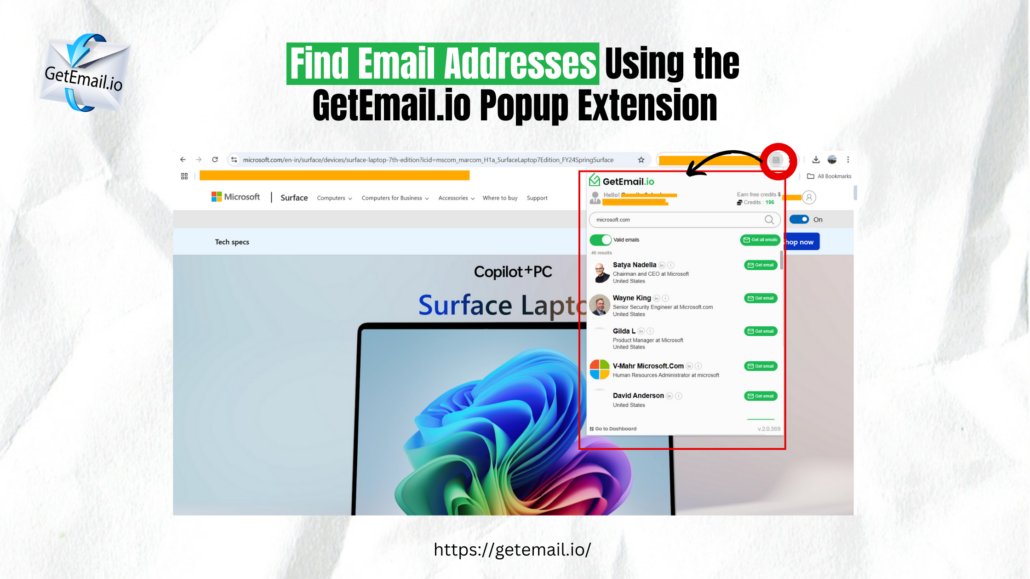
This way, you’re showing up as someone helpful and knowledgeable—not just another person pushing a product.
As you may know, familiarity makes people comfortable.
When you’ve already interacted with them in small ways, your email doesn’t feel like it’s coming out of nowhere.
Instead, it feels like a continuation of the conversation, making them much more likely to open and engage with what you’re saying.
Track Engagement to Refine Your Approach
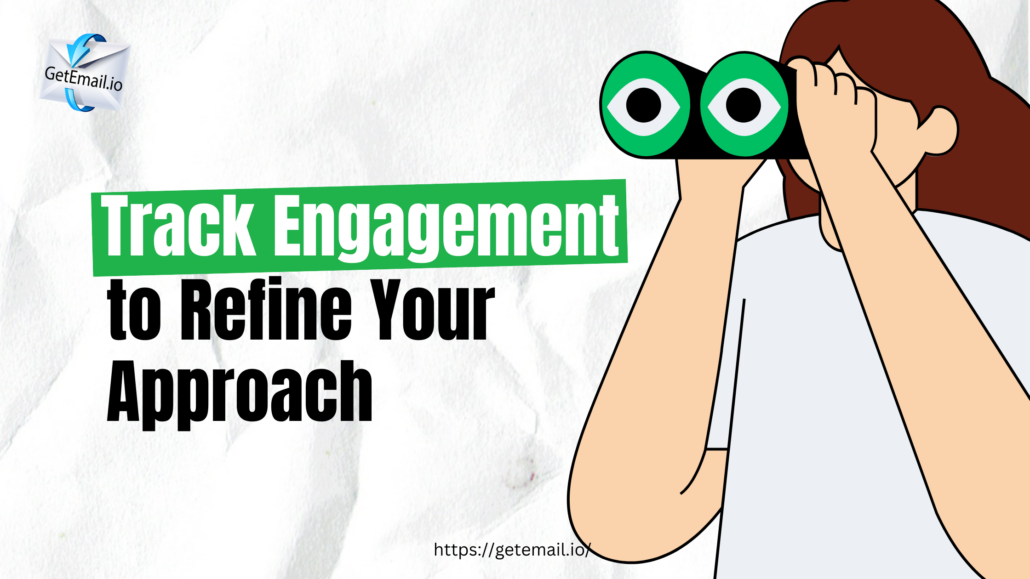
High-value accounts are rarely won with just one email—it’s usually a gradual process.
Tracking how your contacts engage with your outreach can reveal valuable insights, helping you see what’s working and where you might need to adjust.
This way, you can fine-tune each interaction to make it more relevant and effective.
Identify What’s Resonating
By keeping an eye on open rates, clicks, and responses, you start noticing patterns.
For example, if emails focused on cost savings or scalability are getting the most clicks, it’s a signal that these topics are important to your contacts.
You can then focus more on these areas in future messages, ensuring that your outreach speaks to what matters most to them.
Organize Contacts by Engagement Level
Not everyone engages in the same way, so grouping your contacts based on their level of interest can help you target them better. For example:
High-engagement contacts (those who frequently open and click) are likely ready for a deeper conversation. Inviting them to a demo or a call could be the next step.
Lower-engagement contacts might benefit from more subtle follow-ups, like sharing helpful resources or industry insights to keep them interested without overwhelming them.
This approach keeps your outreach dynamic and responsive, making each contact feel like you’re genuinely listening and adapting.
Instead of a blanket approach, you’re refining your strategy based on real-time feedback, which makes your messaging more personal and increases your chances of meaningful engagement.
Provide Continuous Value Beyond the Initial Email
High-value accounts often make decisions over time, so it’s essential to establish yourself as a trusted partner through ongoing value.
Rather than pushing for an immediate sale, focus on building a long-term relationship by sharing useful insights and staying on their radar.
Send Regular, Relevant Updates
Share updates that align with their goals—like industry news, new case studies, or product features that support their objectives.
For example, if they’re interested in growth, you might share content on scaling strategies or case studies that show how your product supports expansion.
These updates show you’re tuned into their needs and keep your solution relevant.
Highlight Success Stories and ROI
Show them how similar companies have benefited from your solution, giving them a concrete sense of the value you deliver.
Real examples of cost savings or productivity gains reinforce your credibility and demonstrate that your solution drives results.
This steady, value-driven approach builds the kind of trust that high-value accounts look for in long-term partners.
By sharing meaningful information consistently, you position yourself as a reliable resource they can turn to when they’re ready to make a decision.
Concluding Thoughts
With the use of GetEmail.io to target high-value B2B accounts you can transform your outreach from broad cold emails to intentional, impactful connections.
By reaching beyond executives to engage the full decision network, tailoring messages to fit each account’s priorities, and timing outreach around key changes, you set the stage for meaningful relationships.
This approach isn’t just about getting a response—it’s about building trust and establishing yourself as a valuable partner, setting the foundation for lasting success with high-value accounts.
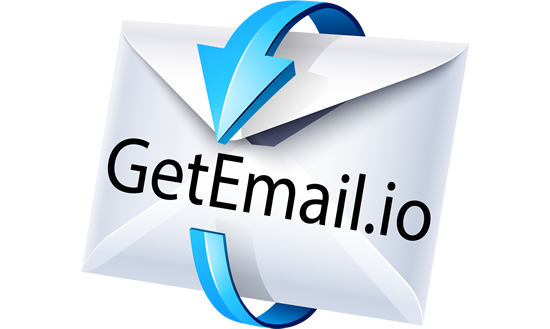




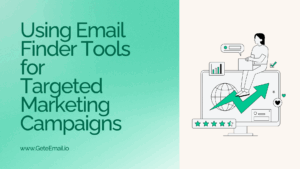
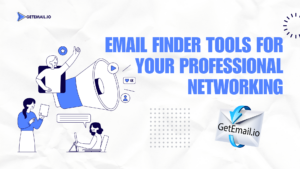
No comment yet, add your voice below!